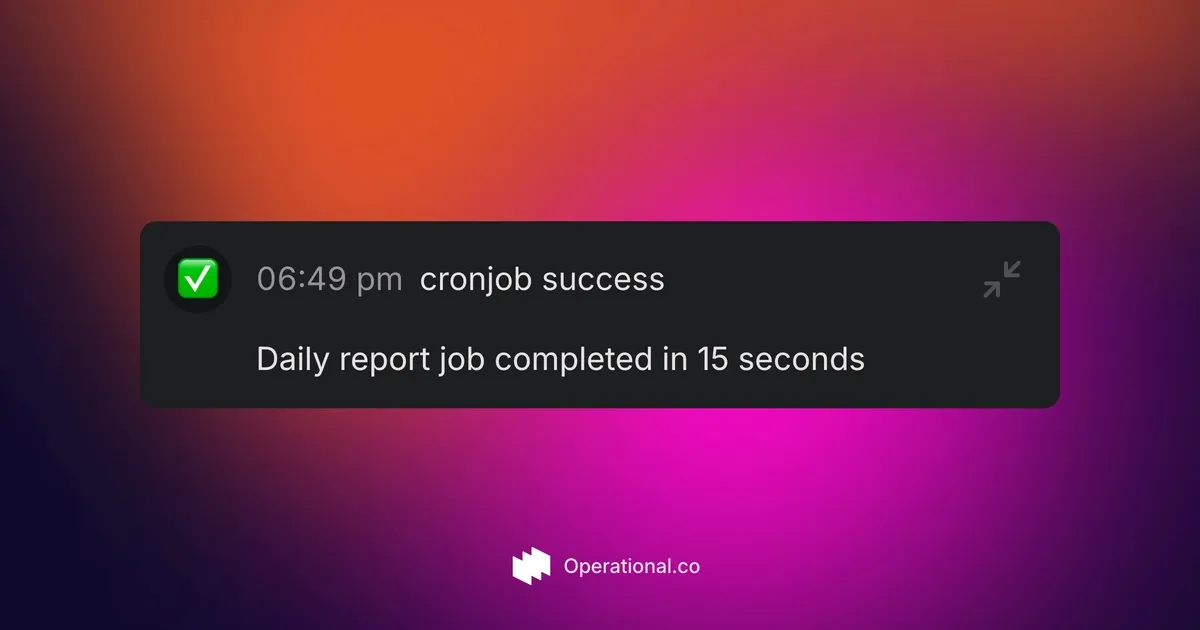What is cronjob monitoring in SaaS
Cronjobs run tasks on a schedule in your SaaS app. They can generate reports, clean data, or send notifications.
Monitoring these jobs helps you spot failures fast. You see if a nightly backup fails or a report takes too long.
For example, a daily data sync that stops working can lead to stale information for your users.
Tracking cronjobs makes sure you fix issues before they affect customers.
Using Operational for cronjob tracking
Operational is a simple event tracking service. You can send events on job success, failure, or duration.
It collects data and shows it in a dashboard. You can set alerts when jobs fail or slow down.

Setting up Operational
-
Go to app.operational.co and sign up for a free account.
-
Create a new project or workspace for your SaaS app.
-
In the project settings, copy your API key.
-
Install the SDK in your project:
npm install @operational.co/sdk -
Paste your API key into your code to start sending events.
Code example
import Operational from "@operational.co/sdk"
const ops = new Operational("API_KEY")
// Success event example
const payload = {
name: "cronjob success",
avatar: "✅",
content: "Daily report job completed in 15 seconds"
}
await ops.events.ingest(payload)The above example sends a success event for a daily report job. You can see it in the Operational dashboard.
// Failure event example
await ops.events.ingest({
name: "cronjob failure",
avatar: "❌",
content: "Daily report job failed due to timeout"
})
// Slow job alert example
await ops.events.ingest({
name: "cronjob slow",
avatar: "🐢",
content: "Daily report job took 300 seconds, exceeding threshold"
})These examples show how to track failures and performance issues.
Conclusion
Monitoring your cronjobs with Operational saves time and hassle. You get real-time insights and alerts on job status.
Learn more at https://operational.co. Try the playground at https://operational.co/playground to copy and paste snippets instantly.
